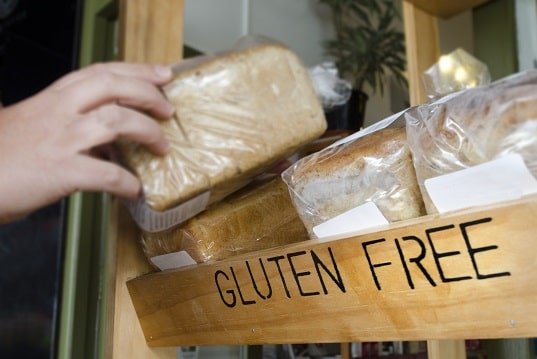This post may contain Amazon® product affiliate links. We may receive a commision if you make a purchase after clicking on one of these links but at no cost to you. Please visit Our Disclaimer Page for more information. Thank you.
 There are a number of health and personal reasons for choosing a gluten-free diet, but it isn’t always easy to find gluten-free products. Most brands of bread, cereal and pasta that you buy at the store contain gluten, so often the best option is to make breads and other baked goods at home. In this section, we’re focusing on everything related to gluten and how you can use your bread maker to support a gluten-free diet.
There are a number of health and personal reasons for choosing a gluten-free diet, but it isn’t always easy to find gluten-free products. Most brands of bread, cereal and pasta that you buy at the store contain gluten, so often the best option is to make breads and other baked goods at home. In this section, we’re focusing on everything related to gluten and how you can use your bread maker to support a gluten-free diet.
The Basics: What is gluten and why is it an issue?
Gluten is a protein found in wheat, barley and rye – and subsequently, any products made with any of those three grains. This makes it extremely common in bread products, including sliced bread, cereal and pasta. Even products that use white or all-purpose flour have gluten, because both contain wheat.
Leslie Bonci of the American Dietetic Association (ADA) indicates that simple gluten intolerance can be uncomfortable (causing stomach pain, bloating and other digestive issues) but symptoms are typically only temporary. Gluten intolerance is not a food allergy, nor does it usually cause damage except with Celiac Disease.*
Celiac disease is an autoimmune issue is where gluten actually triggers the body’s immune defenses to start attacking the villi in the small intestine that absorb nutrients from food. It’s a genetic disease and there is no cure, but removing gluten from your diet once you’re diagnosed will, “halt the disease’s symptoms, heal existing villi damage and prevent the destruction of the small intestine.”*
Even if you don’t have celiac disease, digestive issues and even healthy digestion can be aggravated by too much gluten in your diet. For this reason, even people without the disease may choose to eat a gluten-free or at least low-gluten diet to avoid stomach problems. In either case, the only issue is really the difficulty most people have in supporting a gluten-free diet.
How to build a gluten-free diet
To make a gluten-free diet, you need to start by assessing everything you eat. Even foods that you wouldn’t necessarily consider may have gluten. The following list provides products to watch out for*
- Salad dressings
- Cold cuts
- Egg substitutes
- Beer
- Instant flavored rice mixes
- Flavored potato chips
- Imitation crab (surimi)
- Some herbal teas
- Licorice and some chocolates
What’s the difference with gluten-free bread?
Not all grains are bad and off-limits if you’re on a gluten-free diet. Gastroenterology experts list the following grains as safe to consume.
- Corn
- Potato
- Rice
- Soybean
- Tapioca
- Arrowroot
- Carob
- Buckwheat
- Millet
- Amaranth
- Quinoa
For gluten-free breads, typical flours such as white, wheat and rye and substituted for their less-common cousins that don’t contain gluten. This way, you’re able to keep bread in your diet and simply remove the gluten instead.
How does a bread maker help in a gluten-free diet?
With the limitations on the types of flours that can be used in the breads you eat, bread making becomes an almost essential part of a gluten-free lifestyle. Premade gluten-free breads are difficult to find and usually limited in the kinds of bread you can get even when you do find them in health food and specialty markets. Having a bread maker and baking at home allows you to expand the selection of breads and baked goods you can have, to keep your diet from getting bland and boring.
In addition, gluten-free dough for other baked goods like pasta, pizza crust and even cake can be prepared in your bread maker and then baked in your oven. Everything from breakfast buns to birthday cake becomes accessible – a particularly good point for families with children that need a gluten-free diet.